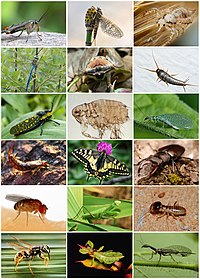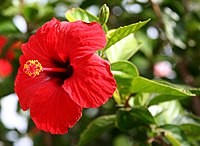
Patterns of population genomic diversity in the invasive Japanese knotweed species complex.
Sign Up to like & getrecommendations! Published in 2021 at "American journal of botany"
DOI: 10.1002/ajb2.1653
Abstract: PREMISE Invasive species are expected to undergo a reduction in genetic diversity due to founder effects, which should limit their ability to adapt to new habitats. Still, many invasive species achieve widespread distributions and dense… read more here.
Keywords: japanese knotweed; diversity; genetic diversity; invasive species ... See more keywords

Genome and cuticular hydrocarbon‐based species delimitation shed light on potential drivers of speciation in a Neotropical ant species complex
Sign Up to like & getrecommendations! Published in 2022 at "Ecology and Evolution"
DOI: 10.1002/ece3.8704
Abstract: Abstract Geographic separation that leads to the evolution of reproductive isolation between populations generally is considered the most common form of speciation. However, speciation may also occur in the absence of geographic barriers due to… read more here.
Keywords: genome cuticular; hydrocarbon based; species complex; cuticular hydrocarbon ... See more keywords

Genomic divergence, local adaptation, and complex demographic history may inform management of a popular sportfish species complex
Sign Up to like & getrecommendations! Published in 2022 at "Ecology and Evolution"
DOI: 10.1002/ece3.9370
Abstract: Abstract The Neosho Bass (Micropterus velox), a former subspecies of the keystone top‐predator and globally popular Smallmouth Bass (M. dolomieu), is endemic and narrowly restricted to small, clear streams of the Arkansas River Basin in… read more here.
Keywords: bass; smallmouth bass; species complex; divergence ... See more keywords

A resilient brooding coral in the broadcast spawning Porites lobata species complex: a new endemic, introduced species, mutant, or new adaptive potential?
Sign Up to like & getrecommendations! Published in 2020 at "Coral Reefs"
DOI: 10.1007/s00338-020-01922-w
Abstract: With increasing exposure to local and global stressors associated with a rapidly changing climate, corals adapted to thrive within stressful environments are of particular interest to researchers and managers. A bleaching resilient Porites coral with… read more here.
Keywords: lobata species; brooding coral; broadcast spawning; resilient brooding ... See more keywords

Two new species of Phoreiobothrium Linton, 1889 (Cestoda: Onchoproteocephalidea) off southern Iran, completing the puzzle of Phoreiobothrium faunas in Rhizoprionodon acutus species complex
Sign Up to like & getrecommendations! Published in 2019 at "Parasitology Research"
DOI: 10.1007/s00436-019-06402-x
Abstract: It has been shown that the milk shark, Rhizoprionodon acutus (Rüppell), is probably a complex of four narrowly distributed cryptic species. To confirm this hypothesis, the oioxenous species of the onchoproteocephalid genus Phoreiobothrium Linton, 1889… read more here.
Keywords: rhizoprionodon acutus; phoreiobothrium linton; phoreiobothrium; shark species ... See more keywords

Four mycelial strains of Entoloma clypeatum species complex form ectomycorrhiza-like roots with Pyrus betulifolia seedlings in vitro, and one develops fruiting bodies 2 months after inoculation
Sign Up to like & getrecommendations! Published in 2020 at "Mycorrhiza"
DOI: 10.1007/s00572-020-00994-4
Abstract: Entoloma clypeatum species complex (ECSC) forms ectomycorrhiza-like roots (EMLR) with host plant species of Rosaceae or Ulmaceae. The EMLR colonized with ECSC are characterized by a thick fungal mantle, absence of a Hartig net structure,… read more here.
Keywords: fruiting bodies; ectomycorrhiza like; ecsc; species complex ... See more keywords

Phylogenetic relationship and fungicide sensitivity of members of the Colletotrichum gloeosporioides species complex from apple
Sign Up to like & getrecommendations! Published in 2017 at "Journal of General Plant Pathology"
DOI: 10.1007/s10327-017-0732-9
Abstract: The members of the Colletotrichum gloeosporioides species complex (CGSC), the dominant pathogens of apple bitter rot in Nagano prefecture, Japan, were reidentified and the relationship between the species and fungicide sensitivity was revealed. Based on… read more here.
Keywords: gloeosporioides species; members colletotrichum; colletotrichum gloeosporioides; apple ... See more keywords

Phylogenetic relationships, population demography, and species delimitation of the Alouatta belzebul species complex (Atelidae: Alouattinae)
Sign Up to like & getrecommendations! Published in 2021 at "Primates"
DOI: 10.1007/s10329-021-00959-x
Abstract: Howler monkeys (genus Alouatta ) exhibit the most extensive distribution among platyrrhines, comprising Mesoamerican and South American species groups, with the South American group including the Brazilian endemic A. belzebul species complex encompassing A. belzebul… read more here.
Keywords: demography; belzebul species; species complex; population ... See more keywords

Two new species of the Fusarium solani species complex isolated from compost and hibiscus (Hibiscus sp.)
Sign Up to like & getrecommendations! Published in 2018 at "Antonie van Leeuwenhoek"
DOI: 10.1007/s10482-018-1068-y
Abstract: Two new species in the Fusarium solani species complex (FSSC) are described and introduced. The new taxa are represented by German isolates CBS 142481 and CBS 142480 collected from commercial yard waste compost and vascular… read more here.
Keywords: hibiscus; two new; new species; species fusarium ... See more keywords

Construction of a single nucleotide polymorphism marker based QTL map and validation of resistance loci to bacterial wilt caused by Ralstonia solanacearum species complex in tomato
Sign Up to like & getrecommendations! Published in 2020 at "Euphytica"
DOI: 10.1007/s10681-020-2576-1
Abstract: Bacterial wilt (BW), caused by Ralstonia solanacearum species complex is one of the major biotic factors limiting tomato production in the humid tropics. Pyramiding of resistance genes through marker-assisted selection is an efficient way to… read more here.
Keywords: bwr bwr; bwr; resistance; marker ... See more keywords

The importance of hidden diversity for insect conservation: a case study in hoverflies (the Merodon atratus complex, Syrphidae, Diptera)
Sign Up to like & getrecommendations! Published in 2018 at "Journal of Insect Conservation"
DOI: 10.1007/s10841-018-0111-7
Abstract: Cryptic species represent a large component of hidden biodiversity. Some cryptic taxa require specific climate and habitat conditions and have limited dispersal abilities. In order to assess the importance of cryptic species and to minimize… read more here.
Keywords: atratus complex; conservation; merodon atratus; cryptic species ... See more keywords